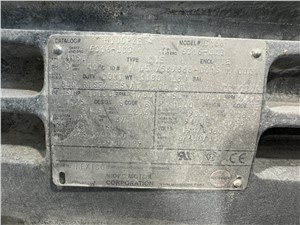There are several different types of ribbon blenders. The material of construction is a very important in determining what the ribbon blender may be used for. Typically, blenders are made of either carbon steel or stainless steel. Stainless steel is required for most food applications while carbon steel may be used in non-food applications. Typical aggitators include double ribbon (consisting of an inner and outer ribbon in counter- directional flow) or Paddle-Ribbon (which combine inner ribbons with outer paddles used commonly for heat sensitive products). Jackets are used to help regulate the temperature of the blender.
Mixing Equipment Specifications: Ribbon Blender Options
With the various purposes, features and options in the Ribbon Blender mixing equipment category, there is a lot to consider in finding the ideal solution for your industrial mixing requirements.
Size and Volume
The size of the ribbon blender is the most important aspect to consider when selecting your ribbon blender. The amount of material you can blend will depend on this. Arlington Machinery typically lists the cubic foot volume of the vessel on its website. It is good to note that typically the working capacity is approximately 80% of the vessel volume. The working volume is characterized by the area of the agitator ribbon itself.
Blender Type
A ribbon blender can have a few different configurations of agitators. Typically, most blenders have a double spiral. The outer helix of the ribbon moves product in one direction, while the inner helix of the ribbon moves the material in the opposite direction. This movement of material from one end to the other provides a fast but gentle mixing action. Paddles for mixers can also be used instead of ribbons. This can be true of ingredients that have a high liquid content or those that are sensitive to shear.
Material of Construction
Ribbon mixers are made from carbon steel or stainless. If you are blending food grade, or corrosive materials, stainless steel may be required. If this is not the case, carbon steel blenders would be a better choice because they are less expensive.
Or, if you are working with corrosive materials, another finish may be required. Your ribbon mixer can be customized with a range of materials, finishes, and paint to suit your requirements.
Options
Ribbon blenders have several different types of options depending on processing needs. Jacketing for temperature control is one popular option. The ribbon blender has a steel jacket for liquids to pass through and control heat. Spray or coating bars are also common to apply additives. Discharge valves and accessories is also something to consider when looking a used ribbon blender.
Drive Type
Ribbon blenders are typically driven with a motor directly coupled to heavy duty gearbox or with a large chain and sprocket, or a combination of both. The rpm of the ribbon needs to be lowered to a suitable working speed. Belt/Chain driven ribbon blenders are typically less expensive. Machines that are direct driven with a gearbox are more modern and more expensive. They typically come with VFD’s for speed control which provides more flexibility and efficiency.
Contact Us for Your Ribbon Blender Needs
Arlington stocks mainly the traditional U-shaped shell ribbon blenders used for plastics and chemical operations. Inventory changes regularly, be sure to check back for new stock and contact us to discuss your equipment needs.


___(2).jpg)
.jpg)
.JPG)
.JPG)
